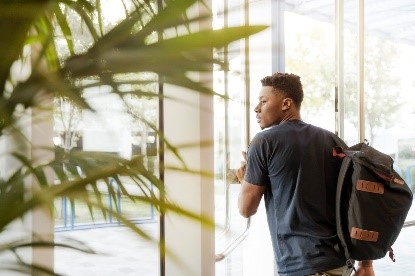- “popping” their neck and back

Occasionally hearing “popping” or noise from a joint as it moves through a normal range of motion as you stretch and move should not cause any problems. However, if a child starts to intentionally seek to “pop” their neck or back on a regular basis. Firstly this can be an indication they are experiencing stiffness and discomfort and they might be due for a chiropractic check-up. Secondly if this is allowed to continue it can lead to a hypermobility issue. Hypermobility is when the ligaments and muscles around a joint are stretched repeatedly resulting in an increase laxity to the soft tissue and less stability to the joint structure. (Gabbey, 2019)
- “W” sitting

“W” sitting is a position when a child has their knees out in front of them, but their ankles and feet are to either side of their hips, creating a W shape.
W sitting does not increase the risk of hip dysplasia or harm to the hip Joint. W- Sitting is actually discouraged because children may sit in the W position to give themselves a wider base of support during seated activities. In this position, they don’t need to use their legs and core muscles as much to sit upright.
Sitting in the W – position too often may also create tight muscles in the legs and hips, which can inhibit normal motion, coordination and balance. The muscles affected include hamstrings, hip adductors and the Achilles tendon.
W sitting limits motion of the trunk and discourages reaching across the body. Favouring the w sitting position may be a sign that your child is avoiding coordination and or independent movement on the right and left sides of the body.
If you do notice that your child favours this position especially past the age of 3, encourage them to sit in other ways and if you have other concerns or notice additional symptoms along with w- sitting discuss with your chiropractor or appropriate your health practitioner.
(International Hip Dysplasia Institute, 2021)
- Wearing back packs with only one strap and / or back packs that are too heavy

When a child wears their backpack with only one strap on, their bodies and especially their spines are in an unbalanced position, if this style of backpack wearing is occurring frequently it can contribute to postural problems in the future. This same thing applies to carrying a backpack that is too heavy for them. A heavy or overloaded backpack will pull the child back with its weight and so the child will lean forward to stabilize himself. It is recommended that backpacks only be loaded up to a weight less than or equal to 10 % of the child’s total body weight. Heavy/ bulky items should be positioned closer to the spine with lighter items in the pockets on the front of the bag.
- Lying down or falling asleep with their head propped up on the side of the couch

Chiropractors don’t want your children to lie like this because, put simply your neck is bent in a way it wasn’t meant to, at least not for the length of a nap, movie or even television show.
- “Text Neck”, head looking down at devices or phone for an extended period on time

When you let your kids hang their head over their devices for long periods of time they can develop what is called “Text Neck” it’s like hanging a 5 kg bowling ball from your neck, which pulls and applies pressure to your spine. Every 2.5cm that your head is in the forward state it adds over 4kgs of pressure to your neck and spine. Limiting screen time is obviously a big part of the answer to this situation. However, if screens and devices do need to be used from time to time a great hack is to have your kids lie down on their tummy and prop themselves up on their elbows or a pillow to use the device. This posture positions the head on top of the neck and shoulder and will also encourage shorter stints of screen time as the extensor muscles of the back and neck have to actively switch on to maintain view of the screen, eventually these muscle will fatigue, naturally promoting your child to take a break.



